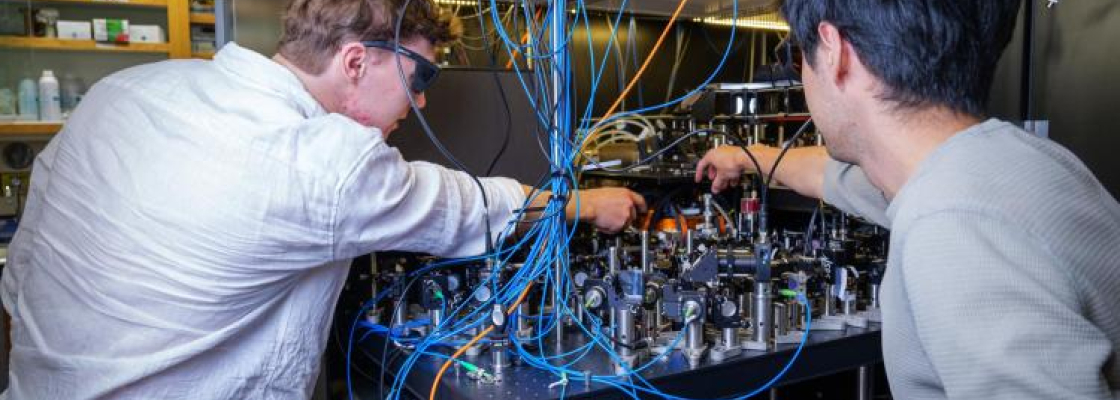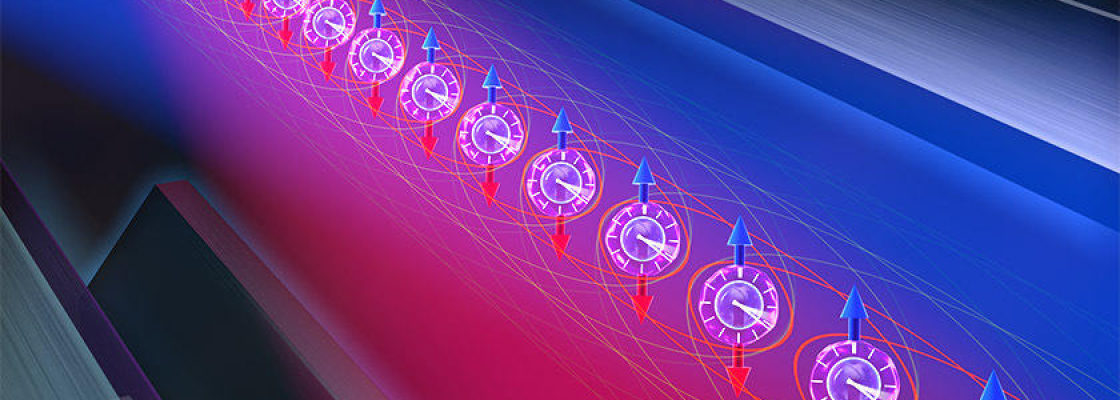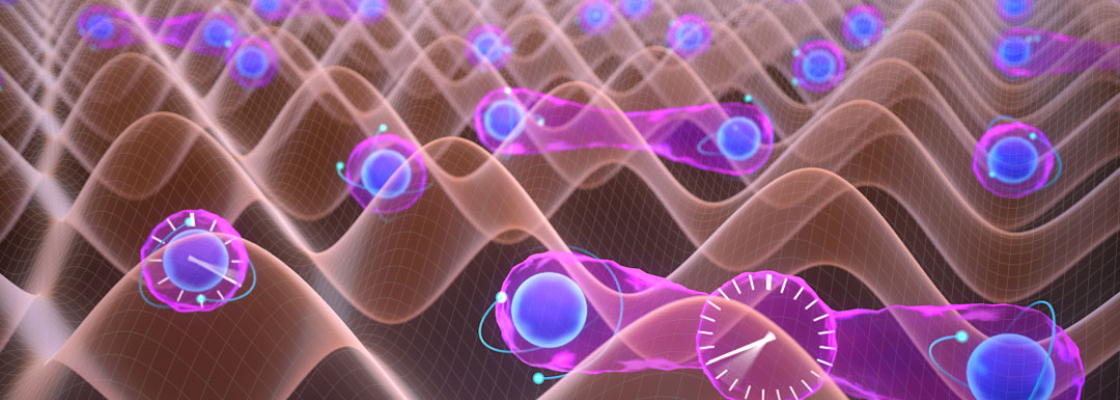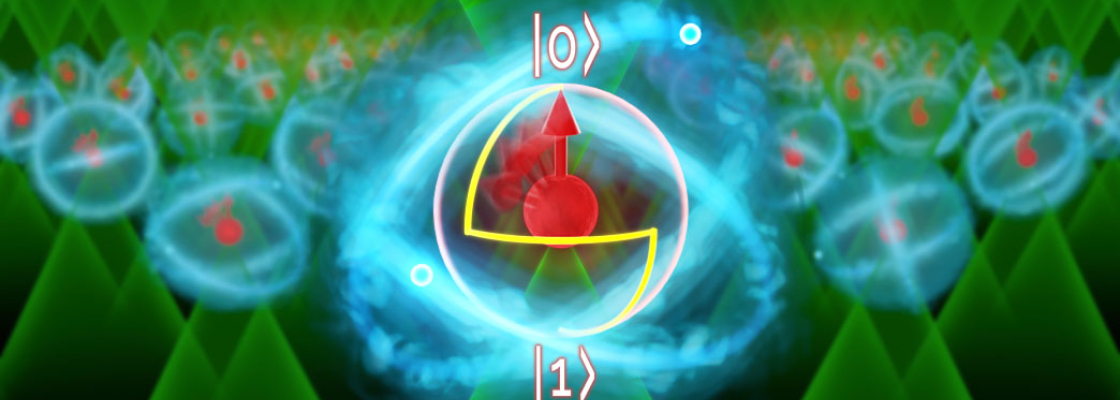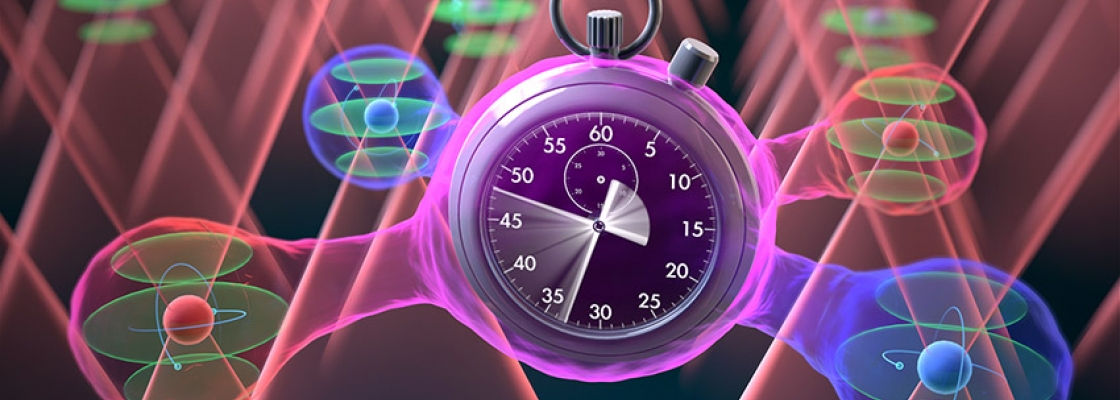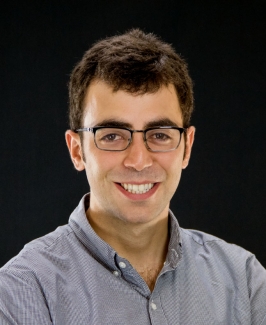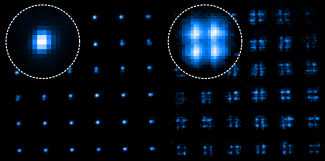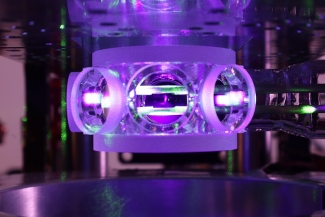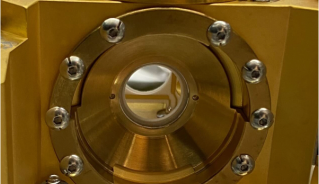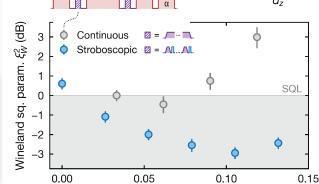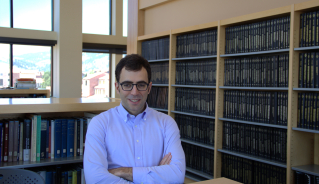One of the scientific pursuits for which alkaline-earth atoms are most famous is optical atomic clocks. In atoms like Strontium and Ytterbium, there exists a long-lived optical transition known as the “clock transition”. Viewed as an oscillator, this transition has an intrinsic quality factor of in excess of 1017— that is, it can ring quadrillions of times before the oscillations die out. This means this oscillator can serve as an exceptional time-keeper, and, indeed, in the past decade, such optical atomic clocks have allowed some of the most precise measurements ever made by humans.
About the Kaufman Group
How does classical physics –- such as statistical mechanics — emerge from the collective behavior of quantum mechanical systems? Can we develop new tools for the manipulation of individual particles, such as complex atoms, ions or molecules, whose interactions and internal degrees of freedom establish new prospects for quantum science?
To answer questions like these, our group applies the tools of atomic, molecular, and optical physics to the microscopic study and control of quantum systems, for applications in quantum simulation, quantum information, and metrology. We marry the tools of quantum gas microscopy, optical tweezer technology, and high precision spectroscopy in order to gain single-particle control at fundamental length scales and very small energy scales.
Towards these goals, we trap single alkaline-earth atoms in optical tweezer arrays, a powerful and effective technology that we demonstrated in 2018 for the first time. Optical tweezers allow precise single-particle control, the engineering of different forms of atomic interactions, and high-fidelity atom-resolved readout. However, while previous work with optical tweezers had focused on alkali atoms, the 2018 work opened the door to tweezer-based control of atoms with two electrons in their valence shell -- although a tiny addition, this additional electron gives rise to the rich internal structure of alkaline-earth atoms, which underlies their applications in metrology, quantum simulation, and quantum information. In this lab, we apply the microscopic control capabilities emerging from the optical tweezer toolset to the quantum science directions that emerge from the use of alkaline-earth atoms.
Research Areas
Another appealing aspect of alkaline-earth atoms is the presence of a second relatively narrow transition — though not as narrow as the clock transition — that can be used for ground-state laser cooling. This is especially powerful when combined with the possibility of rearranging optical tweezers to prepare arbitrary atomic distributions with very low entropy in the atomic spatial distribution. So far, large-scale demonstrations of atomic rearrangement have been used for spin models, with atoms that might be relatively hot in their motional degrees of freedom. In this project, we seek to prepare arbitrary distributions of scalable arrays of ground-state atoms for large scale itinerant models.
Unlike their bosonic counterpart, fermionic isotopes of alkaline-earth atoms benefit from having nuclear spin. This spin has been proposed for new many-body models, such as SU(N) physics, as well as the basis for new qubit architectures. In a new experiment, we seek to gain single-qubit-resolved control of arrays of Ytterbium-171 atoms, where quantum information is stored in the spin-1/2 nuclear spin of this isotope. We seek to engineer the resulting system to fully exploit the high two-qubit gate speeds possible with large Rydberg Rabi frequencies from the excited clock state.
In the Spotlight
The U.S. Department of Energy (DOE) has announced a $625 million investment to advance the next phase of the National Quantum Information Science Research Centers, a cornerstone of the National Quantum Initiative. This funding will support five centers dedicated to accelerating quantum technologies that promise transformative impacts on science, industry, and national security. JILA is proud to remain a key partner in QSA through the Q-SEnSE Center, which focuses on quantum sensing and precision measurement.
Read More
JILA Fellow, National Institute of Standards and Technology (NIST) Physicist and University of Colorado Boulder physics professor Dr. Adam Kaufman has been awarded the prestigious Presidential Early Career Award for Scientists and Engineers (PECASE). President Joe Biden announced that this accolade represents the highest honor conferred by the U.S. government to early-career scientists and engineers who exhibit extraordinary potential and leadership in their respective fields. Kaufman’s groundbreaking contributions to quantum science have cemented his place among nearly 400 recipients recognized for their innovative research and commitment to advancing scientific frontiers.
Read More
JILA Address
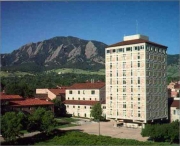 We are located at JILA: A joint institute of NIST and the University of Colorado Boulder.
We are located at JILA: A joint institute of NIST and the University of Colorado Boulder.
Map | JILA Phone: 303-492-7789 | Address: 440 UCB, Boulder, CO 80309




